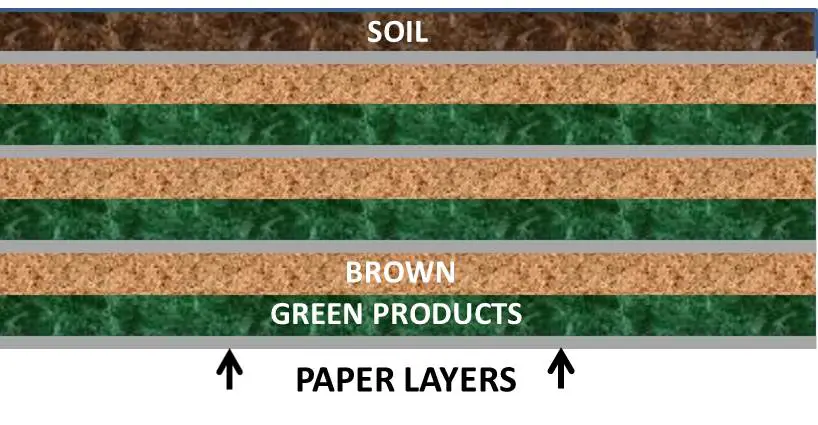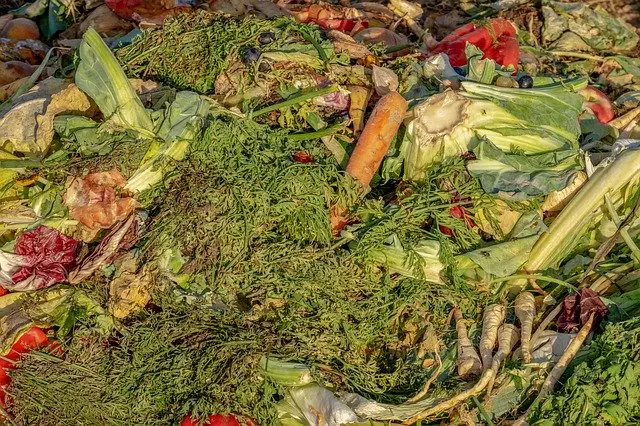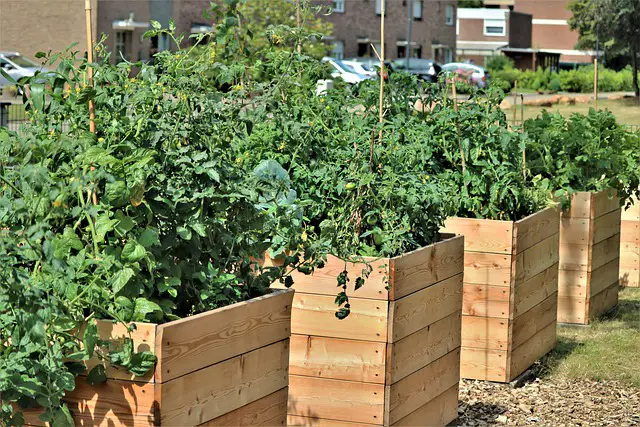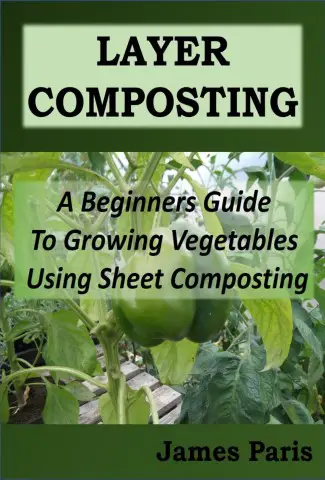What Is A Lasagna Garden?
A Lasagna garden is simply a growing technique that involves a layering process – hence the ‘Lasagna’ tag. The materials are built up in such a way that the ‘green’ material and the ‘brown’ are layered and compost into each other to form the perfect growing medium.
This process is also known as ‘sheet composting’ or simply ‘layer gardening’, both of which describe the lasagna process equally well. In fact though the whole lasagna garden idea is much more akin to traditional composting methods.
Building compost is exactly the same process with a mixture of green organic material for nitrogen and other nutrients, and a mix of brown carbon material that will add bulk and ‘friability’ to the compost mix.
is exactly the same process with a mixture of green organic material for nitrogen and other nutrients, and a mix of brown carbon material that will add bulk and ‘friability’ to the compost mix.

The only real difference with the Raised Bed lasagna garden is that you are are actually growing your vegetables in a ‘work in progress’ compost heap!
When Is The Best Time To Start A Lasagna Garden
lasagna gardening set-up is best started at the end of the growing season. Not essential, but preferable as there is a lot of autumn fall material that can be added to the layers that will make up your sheet compost.
Fallen leaves and other small twigs and debris, can be added along with grass clippings and the remains of your vegetable plot to create the right conditions for your lasagna garden bed.
Another good reason to begin in the late autumn or even winter, is that the material will have had the time to begin the composting process. This is giving your new vegetables planted in the Springtime the best chance for early growth.
Also, by piling the layers together at this time the early composting process can generate excessive heat – especially if you have a lot of green material added.
Whilst this can be good in a ‘Hot Bed Garden’ to give you an early start with your vegetables. The temperature has to be monitored in case the heat generated is too severe and your plant roots get burned up!

By beginning the process this early however you will avoid this heating process – which only happens within the first few weeks – and the bed will be safe to plant in the Spring.
By all means though, if you want to try a Hot Bed Lasagna Garden, then leave it until just a few weeks before the planting season before you put all the ingredients together.
How To Make A Lasagna Garden bed
The process of creating your Raised Bed Lasagna garden, begins very much in the same way that you would a traditional Raised Bed Garden. It is fairly simple and involves just a few steps.
- Choose a good sunny spot for your Raised Bed. On average, It must get at least 8 hours of sunshine per day for best results.
- Once you have chosen a spot then build your frame. The choice of outline size is yours – usually 8 foot by 4 foot for best management. However the depth must be at least 12 inches, and up to 2 foot for best results.
- Start by putting down a layer of cardboard, twigs/leaves, straw, grass clippings, kitchen vegetable cuttings, more cardboard, leaves, straw etc – in that order until your bed is full. Mixing in some compost or topsoil throughout will add extra nutrients and minerals.
- Just before planting a 4-inch layer of compost or good topsoil can be added to give your plants a boost. This also allows more time for the composting material in the layers to mature.
How Deep Should A Raised Bed Be For Vegetables
This really depends on what veggies you are going to grow. If for instance you wish to grow Parsnips or Carrots then the depth must be enough to accommodate their length so they do not curl up at the ends!
With this in mind a suitable depth for most deep root vegetables would be around 18 inches.
Also keep in mind that for deep root vegetables the Bed has to have composted down sufficiently for the roots to break through the layers. So they will definitely benefit more if the layers have been in place for several months prior to planting.
down sufficiently for the roots to break through the layers. So they will definitely benefit more if the layers have been in place for several months prior to planting.
For shallow rooted vegetables such as onions, beetroot, cabbage, kale, cauliflower, all legumes such as peas or beans. These vegetables only need a shallow raised bed at 6 inches or so normally, but with a Lasagna garden 12 inches would be better.

How Soon Can You Plant In A Lasagna Garden
As mentioned above, deep rooted veggies need several months before planting for the layers to break down. Otherwise the roots will have trouble penetrating the tough layers.
For shallow rooted or surface veggies this is not the case. It can be argued however that planting too early does not allow the whole process to mature properly – thus depriving the young plants of the proper nutrients.
I have to say that from my own experience I have had no problems planting shallow rooted vegetables in new Lasagna Gardens – provided I give my plants a ‘kick start’ with a layer of good compost.
By the time the plants are really beginning to need nutrients as they reach maturity, time has passed and the layers are producing the nutrients needed.
The bottom line is that in order to get the best results for your labours, a lot depends on your knowledge and understanding of the sheet composting method.
A badly structured Lasagna Garden just will not ‘produce the goods’ at all – just as any badly laid out garden will not give the results that the gardener hopes for.
Fortunately there are many layer Composting/Lasagna Gardening books and lots of information online that make it possible for even the novice to have a hugely productive Lasagna Garden that will grow healthy vegetables for years to come.
and lots of information online that make it possible for even the novice to have a hugely productive Lasagna Garden that will grow healthy vegetables for years to come.

